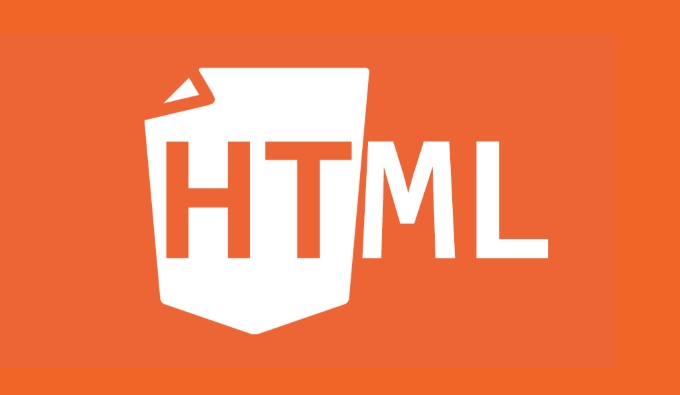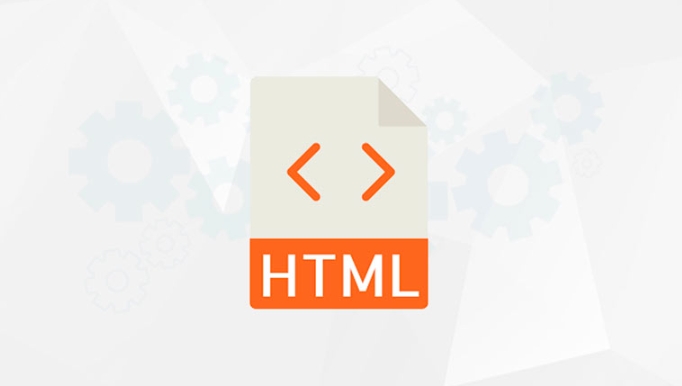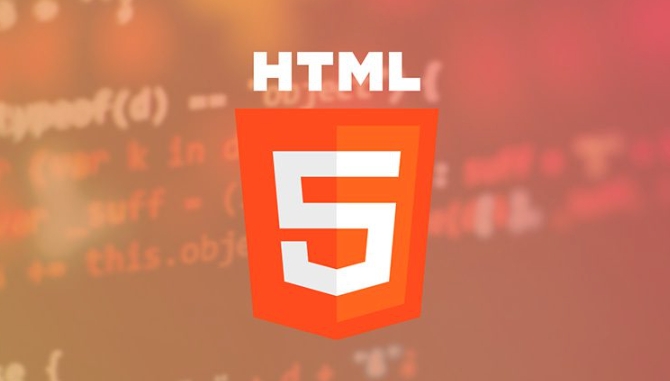How to embed images effectively using the img tag in html?
Jul 15, 2025 am 02:18 AMTo use the <img src="/static/imghw/default1.png" data-src="https://img.php.cn/upload/article/000/000/000/175251709312813.jpeg" class="lazy" alt="How to embed images effectively using the img tag in html?" > tag effectively, always include src and alt attributes. 1. Use src to specify the correct image path and alt for accessibility and SEO. 2. Optimize images by compressing them and choosing the right format — JPEG for photos, PNG for graphics, and WebP for modern browsers. 3. Set proper image dimensions and avoid resizing via HTML. 4. Make images responsive using CSS (width: 100%, height: auto) and the srcset attribute for multiple resolutions. 5. Write descriptive, concise alt text and use meaningful image file names to improve both accessibility and search engine visibility.

When you're working with HTML and want to show images on your page, the <img src="/static/imghw/default1.png" data-src="https://img.php.cn/upload/article/000/000/000/175251709465637.jpeg" class="lazy" alt="How to embed images effectively using the img tag in html?" > tag is your go-to tool. But just slapping an image in there isn't enough — doing it right means making sure your images load fast, look good across devices, and are accessible to everyone. Here’s how to use the <img src="/static/imghw/default1.png" data-src="https://img.php.cn/upload/article/000/000/000/175251709465637.jpeg" class="lazy" alt="How to embed images effectively using the img tag in html?" > tag like a pro.

Use Required Attributes: src and alt
Every <img src="/static/imghw/default1.png" data-src="https://img.php.cn/upload/article/000/000/000/175251709312813.jpeg" class="lazy" alt="How to embed images effectively using the img tag in html?" > tag needs at least two attributes: src and alt.

-
src tells the browser where the image file is located. Make sure the path is correct — whether it's a relative path (like
/images/photo.jpg) or a full URL. - alt provides alternative text that appears if the image can't load. It's also crucial for screen readers, helping visually impaired users understand the content.
Example:
<img src="/static/imghw/default1.png" data-src="dog.jpg" class="lazy" alt="A golden retriever playing in the grass">
Don’t leave alt empty unless the image is purely decorative — even then, use alt="" so screen readers know to skip it.

Optimize Image Size and Format
Big, high-res images may look great, but they can really slow down your site. Always:
- Compress images before uploading them. Tools like TinyPNG or Squoosh do this well.
- Choose the right format:
- Use JPEG for photos.
- Use PNG when you need transparency or sharp graphics (like logos).
- Consider WebP for modern browsers — it offers better compression than JPEG and PNG.
Also, make sure the image dimensions match what's displayed. Don’t just resize using HTML — that still loads the full file. Resize the image itself before uploading.
Make Images Responsive with HTML and CSS
Images should look good on any screen size. To help with that:
- Set
width: 100%andheight: autoin your CSS so images scale down smoothly on smaller screens. - Use the
srcsetattribute in your<img src="/static/imghw/default1.png" data-src="small.jpg" class="lazy" alt="How to embed images effectively using the img tag in html?" >tag to serve different image sizes based on device pixel density.
Example:
<img src="/static/imghw/default1.png" data-src="small.jpg" class="lazy" srcset="medium.jpg 1000w, large.jpg 2000w" alt="Landscape view" style="width:100%; height:auto;" >
This helps mobile users get a lighter image while desktop users see more detail — all without extra work from the user.
Handle Accessibility and SEO Together
The alt attribute plays double duty — it's not only for accessibility but also helps with SEO. Search engines can’t "see" images, so they rely on alt text to understand what an image is about.
Avoid stuffing keywords into alt text. Instead, describe the image clearly and naturally. For example, instead of writing “dog photo picture image,” say “Golden dog running through a field.”
Also, give your image files meaningful names. Instead of IMG_1234.jpg, use something like golden-retriever-playing.jpg. This small change helps both accessibility and search rankings.
That's basically how to embed images effectively using the <img alt="How to embed images effectively using the img tag in html?" > tag. It's straightforward, but those little details go a long way.
The above is the detailed content of How to embed images effectively using the img tag in html?. For more information, please follow other related articles on the PHP Chinese website!

Hot AI Tools

Undress AI Tool
Undress images for free

Undresser.AI Undress
AI-powered app for creating realistic nude photos

AI Clothes Remover
Online AI tool for removing clothes from photos.

Clothoff.io
AI clothes remover

Video Face Swap
Swap faces in any video effortlessly with our completely free AI face swap tool!

Hot Article

Hot Tools

Notepad++7.3.1
Easy-to-use and free code editor

SublimeText3 Chinese version
Chinese version, very easy to use

Zend Studio 13.0.1
Powerful PHP integrated development environment

Dreamweaver CS6
Visual web development tools

SublimeText3 Mac version
God-level code editing software (SublimeText3)

Hot Topics
 How do I minimize the size of HTML files?
Jun 24, 2025 am 12:53 AM
How do I minimize the size of HTML files?
Jun 24, 2025 am 12:53 AM
To reduce the size of HTML files, you need to clean up redundant code, compress content, and optimize structure. 1. Delete unused tags, comments and extra blanks to reduce volume; 2. Move inline CSS and JavaScript to external files and merge multiple scripts or style blocks; 3. Simplify label syntax without affecting parsing, such as omitting optional closed tags or using short attributes; 4. After cleaning, enable server-side compression technologies such as Gzip or Brotli to further reduce the transmission volume. These steps can significantly improve page loading performance without sacrificing functionality.
 How has HTML evolved over time, and what are the key milestones in its history?
Jun 24, 2025 am 12:54 AM
How has HTML evolved over time, and what are the key milestones in its history?
Jun 24, 2025 am 12:54 AM
HTMLhasevolvedsignificantlysinceitscreationtomeetthegrowingdemandsofwebdevelopersandusers.Initiallyasimplemarkuplanguageforsharingdocuments,ithasundergonemajorupdates,includingHTML2.0,whichintroducedforms;HTML3.x,whichaddedvisualenhancementsandlayout
 How do I use the element to represent the footer of a document or section?
Jun 25, 2025 am 12:57 AM
How do I use the element to represent the footer of a document or section?
Jun 25, 2025 am 12:57 AM
It is a semantic tag used in HTML5 to define the bottom of the page or content block, usually including copyright information, contact information or navigation links; it can be placed at the bottom of the page or nested in, etc. tags as the end of the block; when using it, you should pay attention to avoid repeated abuse and irrelevant content.
 How do I use the tabindex attribute to control the tab order of elements?
Jun 24, 2025 am 12:56 AM
How do I use the tabindex attribute to control the tab order of elements?
Jun 24, 2025 am 12:56 AM
ThetabindexattributecontrolshowelementsreceivefocusviatheTabkey,withthreemainvalues:tabindex="0"addsanelementtothenaturaltaborder,tabindex="-1"allowsprogrammaticfocusonly,andtabindex="n"(positivenumber)setsacustomtabbing
 What is the declaration, and what does it do?
Jun 24, 2025 am 12:57 AM
What is the declaration, and what does it do?
Jun 24, 2025 am 12:57 AM
Adeclarationisaformalstatementthatsomethingistrue,official,orrequired,usedtoclearlydefineorannounceanintent,fact,orrule.Itplaysakeyroleinprogrammingbydefiningvariablesandfunctions,inlegalcontextsbyreportingfactsunderoath,andindailylifebymakingintenti
 What is the loading='lazy' one of the html attributes and how does it improve page performance?
Jul 01, 2025 am 01:33 AM
What is the loading='lazy' one of the html attributes and how does it improve page performance?
Jul 01, 2025 am 01:33 AM
loading="lazy" is an HTML attribute for and which enables the browser's native lazy loading function to improve page performance. 1. It delays loading non-first-screen resources, reduces initial loading time, saves bandwidth and server requests; 2. It is suitable for large amounts of pictures or embedded content in long pages; 3. It is not suitable for first-screen images, small icons, or lazy loading using JavaScript; 4. It is necessary to cooperate with optimization measures such as setting sizes and compressing files to avoid layout offsets and ensure compatibility. When using it, you should test the scrolling experience and weigh the user experience.
 How do I use the element to represent a section of navigation links?
Jun 24, 2025 am 12:55 AM
How do I use the element to represent a section of navigation links?
Jun 24, 2025 am 12:55 AM
The key to using elements to represent navigation link areas is semantics and clear structure, usually in conjunction with organizational links. 1. The basic structure is to put the parallel links in and wrap them inside, which is friendly to auxiliary tools and is conducive to style control and SEO; 2. Commonly used in or, for placing main navigation or footer link collections; 3. A page can contain multiple areas, such as main menu, sidebar or footer independent navigation.
 What are best practices for writing valid and well-formed HTML code?
Jul 01, 2025 am 01:32 AM
What are best practices for writing valid and well-formed HTML code?
Jul 01, 2025 am 01:32 AM
When writing legal and neat HTML, you need to pay attention to clear structure, correct semantics and standardized format. 1. Use the correct document type declaration to ensure that the browser parses according to the HTML5 standard; 2. Keep the tag closed and reasonably nested to avoid forgetting closed or wrong nesting elements; 3. Use semantic tags such as, etc. to improve accessibility and SEO; 4. The attribute value is always wrapped in quotes, and single or double quotes are used uniformly. Boolean attributes only need to exist, and the class name should be meaningful and avoid redundant attributes.






